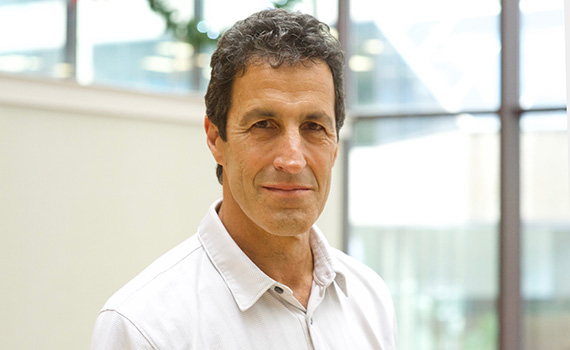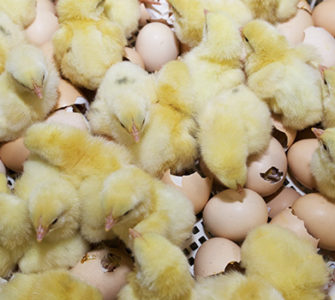Getting the best out of bioshuttle programs
By Jon Schaeffer, DVM, PhD, senior director, Technical Services, US Poultry, Zoetis
In many ways, bioshuttle programs are not just about coccidiosis control – they can also address clostridium issues.
With a bioshuttle program, a coccidiosis vaccination is administered at the hatchery, usually by spray although in ovo administration is also an option. The vaccine stimulates immunity by delivering live coccidial oocysts. A couple of weeks later, chicks start receiving an in-feed anticoccidial.
Ionophore anticoccidials allow some “leakage” of coccidia, further stimulating immunity, while non-ionophore anticoccidials actually kill off coccidial oocysts. Generally, only one anticoccidial per flock is used in a bioshuttle program to preserve the few options available for use later in a rotation program.
Proper timing for anticoccidial is critical
Since in-feed anticoccidials can kill off vaccinal oocysts, they can’t be given too soon. The vaccine needs time to initiate immunity. Day 14 is generally the earliest we see producers start using an anticoccidial, and ultimately, the longer they can wait to start, the better it is for immunity. The length of time needed to develop some flock immunity is also a function of litter conditions, turnout times and the degree to which the vaccine was administered properly at the hatchery.
Some producers have found that keeping an ionophore in the feed beyond the grower stage can trigger gangrenous dermatitis, so they gravitate toward using a non-ionophore anticoccidial to mitigate this problem.
On the front end of the production cycle, NE in vaccinated flocks is a concern but can often be mitigated with avilamycin, an antibiotic that can be used in World Health Organization (WHO)-approved coccidiosis-control programs but not in no-antibiotics-ever (NAE) production systems.
Since avilamycin was introduced relatively recently, clostridial sensitivity remains quite good; however, the product can only be used for 21 consecutive days. By providing protection against NE for at least the first 21 days, or even a few days beyond depending on when avilamycin is initiated, the antibiotic allows producers to push the time when an anticoccidial is started further into growout. This gives coccidiosis vaccines a longer time to generate immunity before coccidia are shut down by an anticoccidial.
To avoid issues, all components need to work
In many operations, we still find Eimeria maxima cycling despite use of an anticoccidial starting at 14 to 21 days of age. E. maxima in these cases must be field strains because all Eimeria in coccidiosis vaccines are sensitive to anticoccidials. When E. maxima is cycling despite vaccination, it’s an indication the vaccine didn’t get the job done.
We also commonly see coccidial cycling with ionophores, which have been used extensively over the years largely because they’ve provided a relatively inexpensive option. Lesion scoring during posting sessions needs to be used as a guide to indicate when the anticoccidial used in a bioshuttle program needs to be changed.
NAE production poses anticoccidial questions
Unlike in Europe, US-based NAE producers can’t use ionophores since the FDA considers these anticoccidials to be antibiotics. They can only use vaccination plus a non-ionophore anticoccidial. Consequently, most NAE production systems use some type of eubiotic, water acidifiers or chemicals such as copper sulphate to address either coccidia cycling or, more commonly, the bacterium Clostridium perfringens.
In theory, NAE production systems need to start an in-feed anticoccidial sooner than needed in a conventional system because they don’t have the luxury of using an antibiotic to control clostridium. Sometimes NAE producers are reluctant to use the more effective non-ionophore anticoccidials in a bioshuttle because they want to reserve them for use later in their annual rotation. This means there are situations where less effective anticoccidials are used early in the rotation. In contrast, a conventional producer following WHO guidelines would opt for using an ionophore.
In general, bioshuttle success for NAE producers requires the same kind of management needed for successful NAE production. This includes optimizing breeder flock management for high-quality hatching eggs and chicks, cleaning up the hatchery, properly vaccinating chicks, having adequate downtimes between broiler flocks, good litter management, high-quality feed and water, and good ventilation.
A recent downward trend in NAE production is likely to drive up the use of ionophores. I expect vaccines will remain popular, not least because they are a cheap option for coccidiosis control, at $4 to $6 per 1,000 doses[1].
Ultimately, producers are looking for cost-effective ways to deal with the ubiquitous challenge of Eimeria in production facilities, judging success based on the usual performance markers: feed conversion, body weight, uniformity and condemnations.
1 Blake DP, Knox J, Dehaeck B, Huntington B, Rathinam T, Ravipati V, Ayoade S, Gilbert W, Adebambo AO, Jatau ID. 2020. Re-calculating the cost of coccidiosis in chickens. Vet Res. 51(1):1-14.
Editor’s note: The opinions and advice presented in this article belong to the author and, as such, are presented here as points of view, not specific recommendations by Poultry Health Today.
All trademarks are the property of Zoetis Services LLC or a related company or a licensor unless otherwise noted.
©2021 Zoetis Services LLC. All rights reserved. POU-00183
Posted on May 1, 2022

















